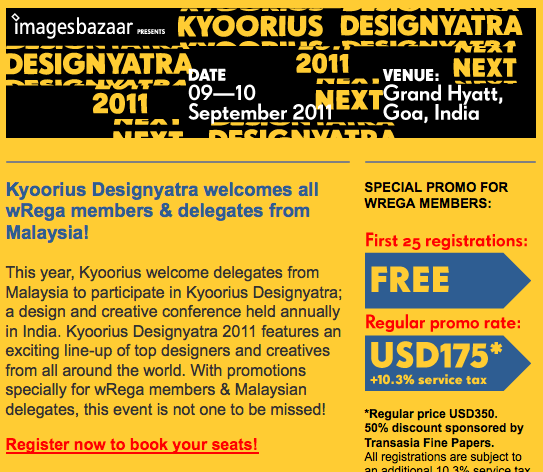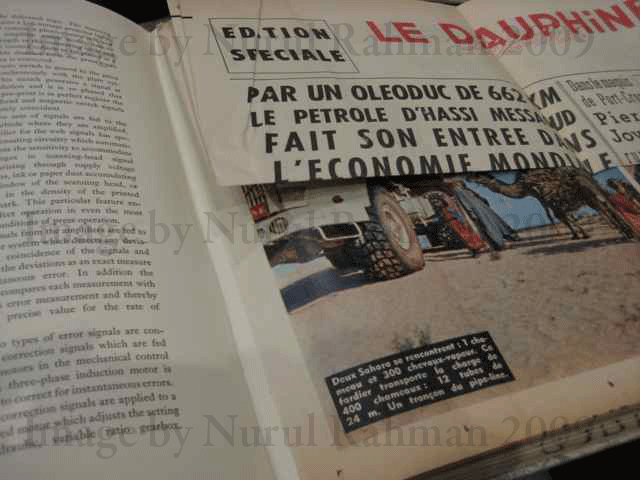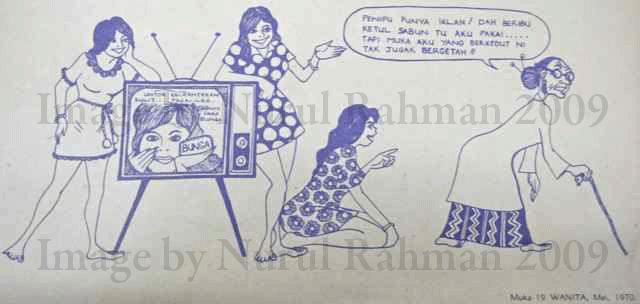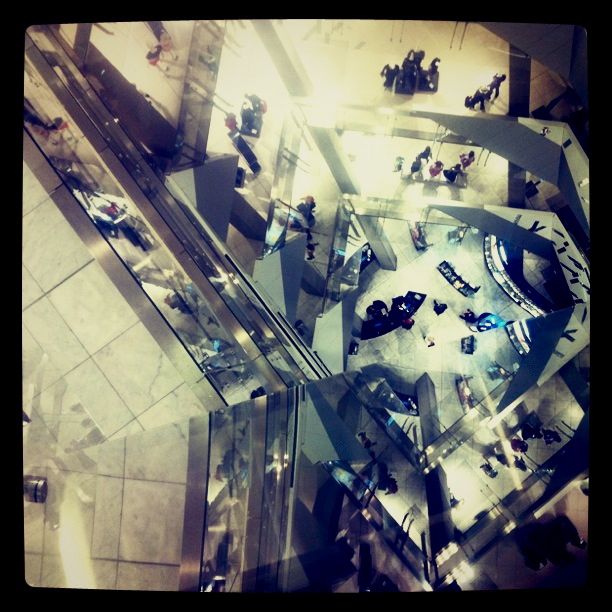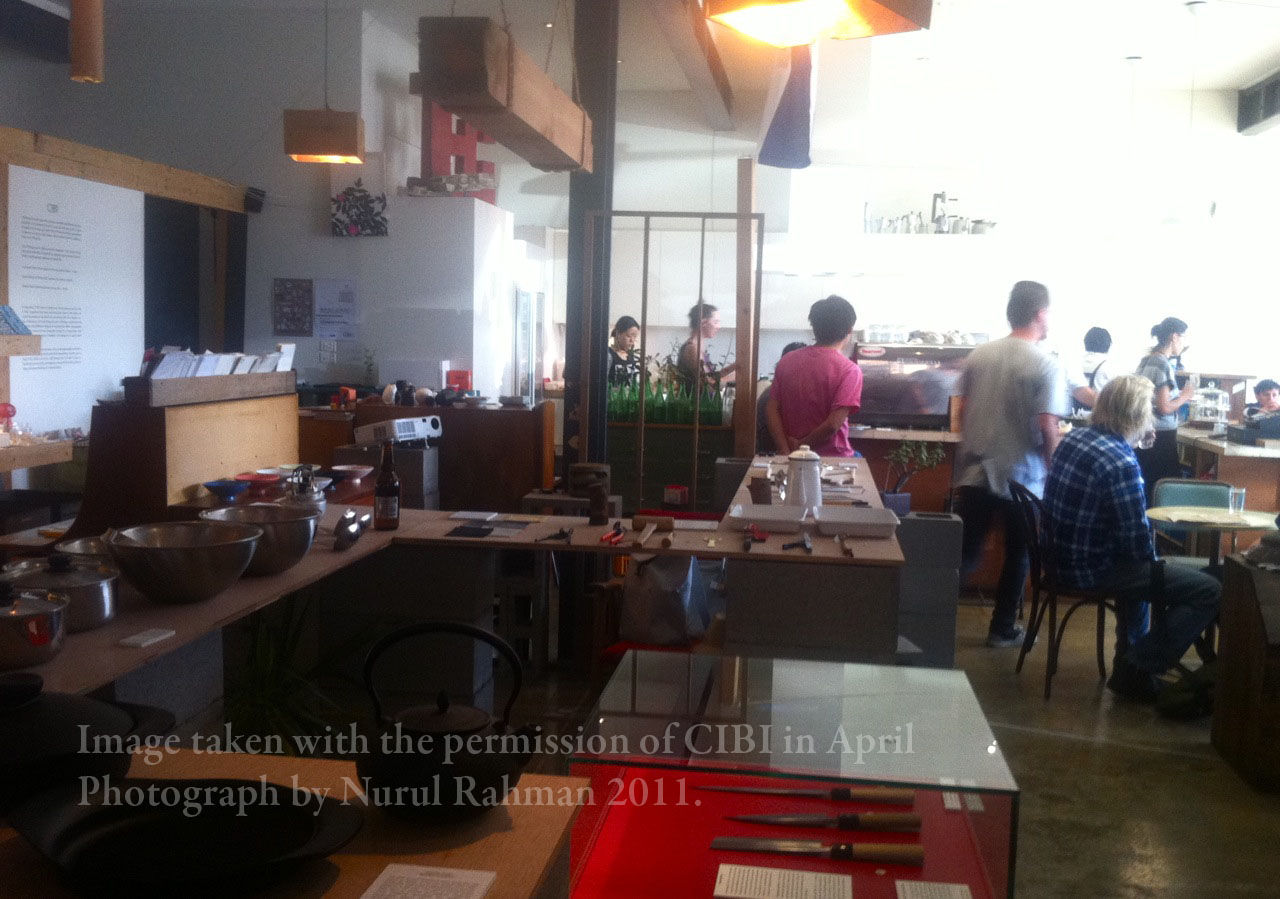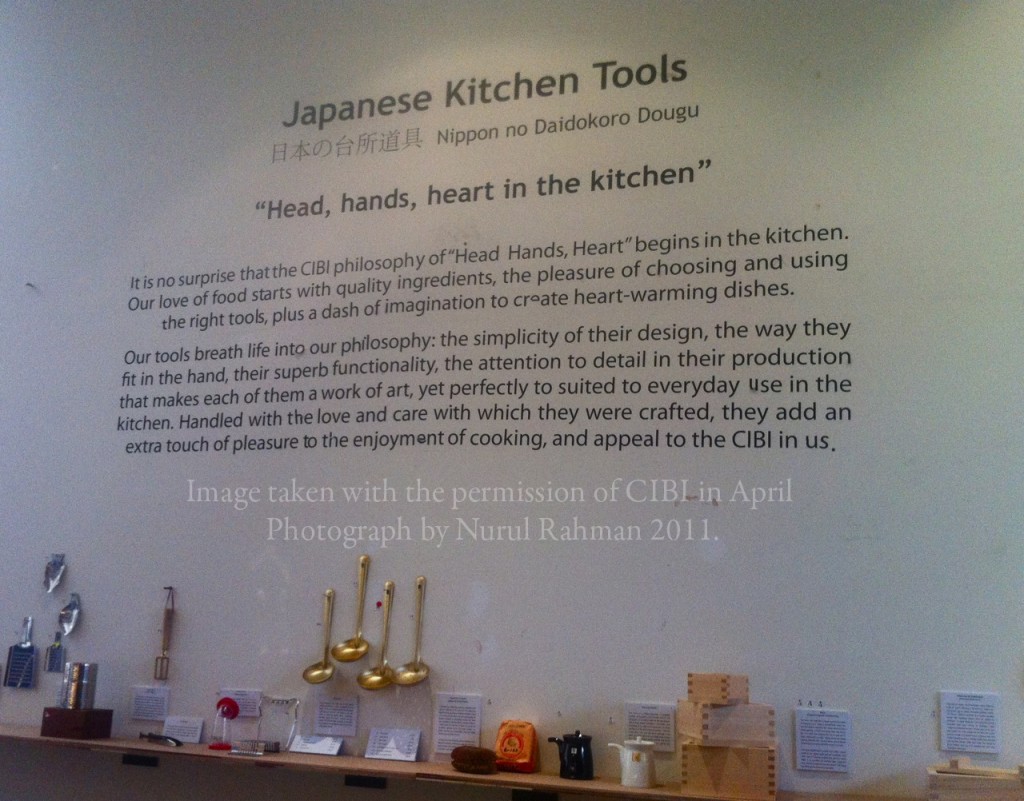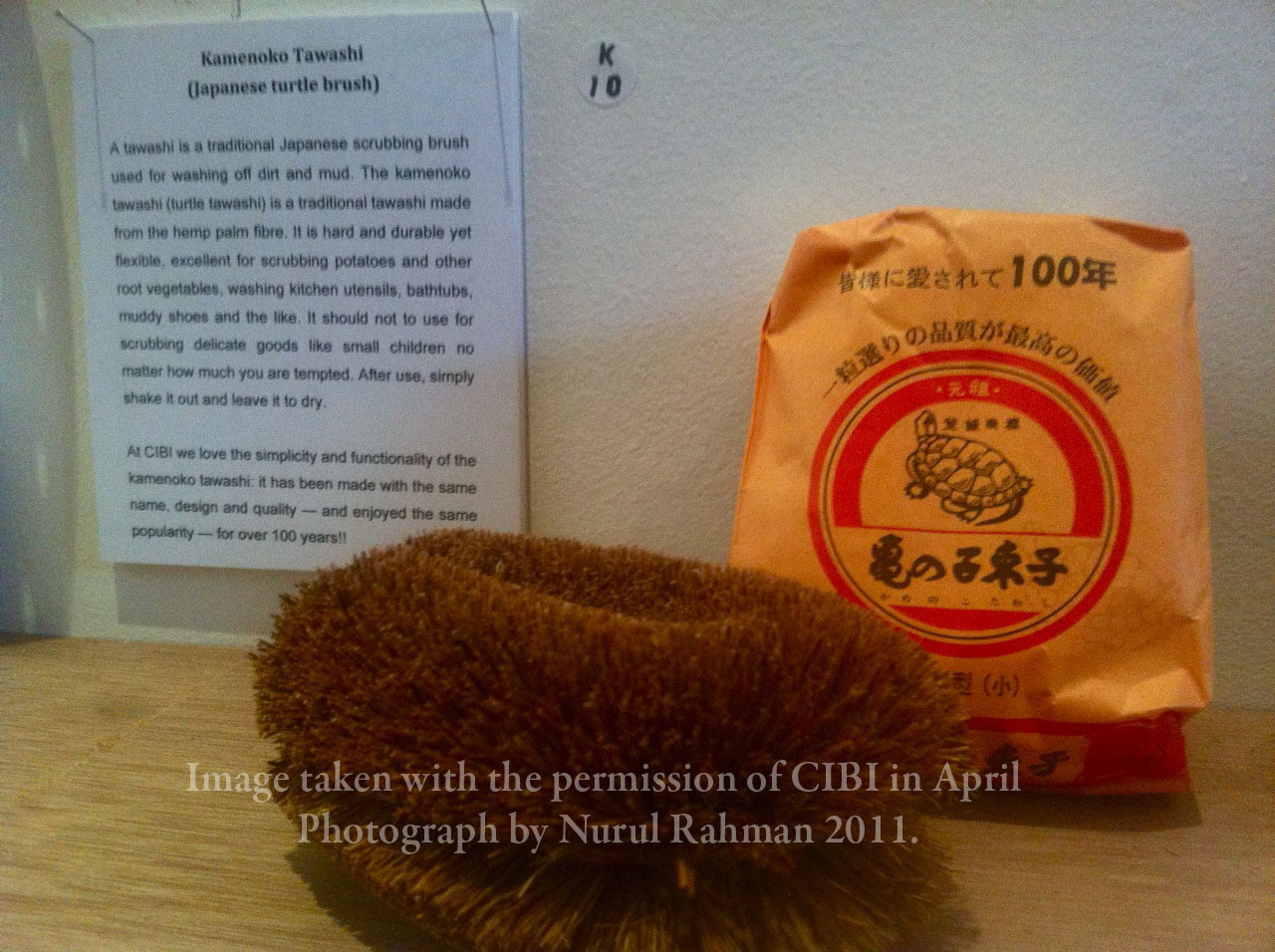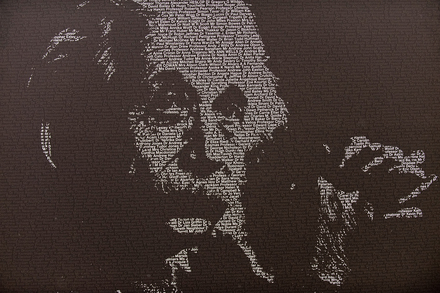Come on! Seats are going fast.. It’s a free seats for Members of Malaysia Graphic Design Association (wRega).
Kyoorious Designyatra is a established design conference and talk for designers to meet up and share their ideas about design.
Designing for Everyday life
Designing for Everyday life
Designing for everyday life is not a new phenomenon, in fact it has been a practice in a role as a designer for decades (Papanek 1972, Heskett 2003, Shove 2007). But it is something that gets very little attention from academic scholar publication. Perhaps, not many designers that choose to take the academic path, or perhaps some did but have been through a hard time in fitting in academic life and decided to go return to practice. Nobody knows the actual reason behind it.
But one things for sure, the areas began to shine in academic discussion. Design in general became popular again. No, not only design as in architecture , engineering or product design, but also other little areas in design such as graphic design, typography design, information design, and the newest family in design, Communication Design (Frascara 2004). Also apart from the most know design disciplines, other areas of studies also become emerged in connection with design studies, such as national identity, advertising, photography, iconography, cultural studies and so on (Rahman 2010).
Design is part of our everyday life. This is besides the fancy looking design that almost everybody think design should be. We’re not talking about Philip Stark or Karim Rashid kind of work (not that I considered these are bad design), because design can also be ugly and yet still function appropriately. Let’s not forget that was the initial purpose of the act of designing, not for the look and feel but more for its purpose and function. What happen to Frank Lyod Wright ideas about design? What happen to form follows function as Louis Sullivan try to teach us? What about the idea Victor Papanek try to impose on young designers about designing for the real world?
Design have lost it path, it got mixed up with politics of design. Some has gone through the dark side. Like Jedi climbing toward the dark side. Most designers seems to fancy the glamor side of the practice and attracted towards ‘the blink blink ‘side of the outcome rather then focusing on the vigorous part of design and possible contributions it could make. As pointed by Nigel Beechy, President of News South Wales, Australian Graphic Design Association, designers ‘tends to have almost a pop star mentality, going for the cool, groovy designers at the moment’ as quoted by Rick Poynor in Designing Pornotopia: Travels in visual culture (2006:108)
David Berman, a Canadian designer in his recent book 2009, asked us ‘not only to do good design, but do good’. Or may be we should start reading again the discussion on the Idea of design by Margolin & Buchanan, 1995 to remind us how far the design path has gone and the initial ideas many designers try to take on.
So, designer.. do good design not only mean do good design as in a amazing, smart, beautiful and dynamic design. Do good! This also means for you to start thinking about:
1. How your design will impact others, what is your roles here?
2. Are you changing anything? If Yes, then ask yourself how and then what purpose does it served?
3. Are you making an improvement by creating another problems?
4. And what about the material you used? Are they safe, good for both your client and the environment we lived in? Will they destroyed anything in future?
5. Or are you creating a false image of other just because the product needs to sell?
These are some of the questions you need to think about before you start imagining the colorful design, fantastic shape and structure, and vis-a-vis to the latest fashion. And most importantly is be conscious of your surrounding and think about doing good.
I would like to also point out the significant practice of documenting and recording. What purpose does this served? Yes, some of them are old and ugly design, outdated and common. I’m sorry if that is part of your past history in design, so what? But some might also surprised you. How modern they were, how Avant-Garde it was? Isn’t design is about making things better? Making life easier? Negotiating some parts of social activities and communicating them as clear as you can? And remember an ugly design of the past, doesn’t mean that it is not part of history. Instead of trying to hide the past fashion style, why don’t you try to learn from them? There are so many things about the past that can informed us. As for designers, the past is where you get your inspiration. What is the future without the past? Where do you think our memories comes from apart from we try to invent it.
The other parts in design in everyday life is also about our everyday life. Yes, what about the little thing that is part of our everyday life (I’m talking from a perspective of visual communication designer here), the ephemeral artifact such as bus tickets, snack packaging, stamp, receipt, plastic bag, Ang Pow folder, cinema tickets and so on.. do we remember how they look like? And do we remember how they have changed? Do we care if they have changed? I have discussed this in my research essay, the important of archiving, collecting and documenting.
When discussions about identity take place, questioning who we are and what we want to be in future? There is no clear answer but yet there are several sets of possibilities. May be one ways to investigate and understand who we are is to go back to the everyday artefact of our life, and what I mean is the not merely the fancy, good looking imagined of our past, but that includes the ugly, imperfect and ordinary artefacts too. They are part of history as Walter Benjamin try to tell us that every image of the past that is not recognized by the present as one of its own concerns, threatens to disappear irretrievably.
One of the actual French newspaper published in 1950 (colour) folded in Penrose Annual London 1960.
WANITA- Malaysian Women Magazine, May 1970, p.19.
Before you start writing your research proposal or abstract..
‘Research is a process, with a mixed of yourself and lots of others’
Photography by Nurul Rahman June 2011
Before you start writing your research proposal or abstract, this might be useful to you.
Research needs to start with problem, here problem can means issues, some gaps that you think need to be filled or some theory that need to be clarify. Although there are some research mostly in science is more on the adding the methodologies and not so much on the problems. But best is to find problems that should be driven your research. If no problem not issues, so why do you want to waste time to do this research, and that means there is no contribution of knowledge.
This is a methodologies to start writing research proposal or abstract. it is known as QAME (introduced to me by Elizabeth Dori Tunstall, a design anthropologist, is an anthropologist method adopting Alan Barnard’s framework (2000) in ‘History and Theory in Anthropology’ of the theory as questions, assumptions, methods, and evidence.
Q: Question
Once the problems have been identified, sets or a research question is necessary, to guide you to start the research exploration.
A:Assumption
Any research need to start with assumption. So you have to have some assumption, with some research that you have done for this proposal.
M: Methodology
It is important to think and include in the research proposal sets of methodologies. Remember this is only a proposal so some of the methodology can be drop once the research started if its not suitable.
E: Evidence
This is early literature review where you demonstrate that you have done research on the key authors in this areas, also some theories that can be useful to use or explore. Also remember to provide credits to everything. This will demonstrate how you are sensible and rigorous in conducting this research.
Also this book written by David Evans and Paul Gubra ‘How to write a better thesis’ (2002) published by Melbourne University Press is a great book, easy reading and have some sense of humor just perfect to start with if you think this is the career path that you want to take or spend in few years.
Well, hope this will help your research proposal writing. All the best and good luck.
NR
So you have decided to pursuit on starting a PhD?
Well really, it doesn’t matter in what areas you’re thinking to do your PhD, as the pain and pressure level is almost equal. This might be an article to read before you make your decision. I thought I share with you guys whose seriously thinking to pursuit a PhD. Well, if you want to do a PhD, who can stop you from doing it, but my advice is to start researching about it so that you are aware of the situations that you might be experience in future. I agreed with most of what Emma is saying here, but I think there are some parts such as relationship with supervisors can be add in as a reflective way to provide insight of the situation. It can add some spicy and bitterness in the progress of your PhD.
And before reading the article watch this video first 😉
Created by Minnie Mouse 1224– “So you want to get a PhD in the Humanities”
A PHD is like childbirth for the brain
PEOPLE often say that writing a PhD is like giving birth to a baby. Having given both these projects a whirl in recent years, I’ve decided that some parts of the analogy are more apt than others.
Like making a new human, enrolling in a Doctor of Philosophy program often seems like a good idea at the time. It is frequently accompanied by thoughts such as how hard can it be?
The answer in both cases, of course, is mind-meltingly, stomach-churningly, sleep-deprivingly difficult. In fact, I wonder if any sane person would ever knowingly embark on PhD study or biological reproduction if they were fully cognizant of the hard labour that was actually involved.
Ive lost track of the lunatic number of: weekends Ive relinquished to study; journal articles Ive read but failed to understand; sentences Ive written and discarded in existential funks; and exotic European theorists whose names Ive mispronounced at annual reviews.
Thinking back over these brutal statistics makes me feel like sleeping for a week then reading nothing but pulp fiction for the next century.
Its erudite alright.
Like many other students, my doctoral difficulties began with conception. This is because PhD candidates are required not simply to learn stuff but to make an original contribution to their field.
In other words, youre supposed to come up with something that is both brand spanking and new.
Human propagation is a cinch in this respect. Prospective parents do not have to wrack their brains formulating an innovative combination of outer and inner characteristics for their offspring. They are able to outsource this part of the process to the magic of DNA.
(And here I also note that accusations of plagiarism are rarely hurled at those parents whose biological compositions show signs of uncited genetic replication.)
In PhDland, however, you cant enrol until youve come up with a proposal, and you cant come up with a proposal until youve absorbed everything thats ever been written on the topic in which youre interested.
It is then necessary to devise a research question no-one has ever asked “ quite a feat given the extent of human curiosity and the surfeit of PhD students.
The imperative to find avant-garde inquiry angles helps explain the delightfully specific nature of many PhD titles. One of my personal favourites is The Biomechanical Effects of Acute Fatigue to the Lower Extremity in Female Kentucky High School Cheerleaders.
Im also a big fan of Relaxation Processes in Semiconductor Quantum Dots and Using a Controlled Lagrangian Drogue to Document Plankton Patchiness.
(Easy to mock. Very hard to do.)
Once deciding on your bizarrely narrow topic and having it cleared by the relevant authorities, you must then commence the lengthy task of PhD gestation which “ at between three and five years of full time study “ is positively elephantine.
Here, PhDancy has distinct advantages in that it is possible to reduce your workload or take official breaks. (Pregnant ladies, on the other hand, do not have the option of gestating only at nights or on the weekends. Neither can they temporarily suspend their candidacy in order to visit Venice or fall in love with someone from the dog park.)
As with human propagation, some theses dont turn out to be viable and may miscarry under tragic circumstances.
Complications during the first trimester of PhD-ing include what the 2007 book Supervising Doctorates Downunder refers to as the inertia caused by an orgy of reading.
Failure to read can also be problematic. In his paper Diseases of the Thesis, Chris Fleming from the University of Western Sydney notes that acquiring a librarys worth of books is not necessarily an incentive to read any of them.
He writes of the belief that mere proximity to books in a room can be absorbed by some mysterious process of osmosis: Who has not, at one time, breathed a sign of relief after copying a long article, momentarily forgetting that one then has to read it, and feeling let down by the banality and drudgery of it all?
Now, this all seems to be produced by the vague feeling that you dont know enough (indeed, this can grow into an almost zen-like absoluteness of a mantra like I dont know anything).
Other PhD-related pathologies described by Fleming include Fraud Paranoia (characterised by the conviction that your intellectual ambitions are an elaborate con), Never-ending-story Delirium (in which you become convinced you will never finish your thesis) and Motion Sickness (involving the endless postponement of study in lieu of tea preparation and house cleaning).
To these, I would add One-track-mind-eosis in that PhD students are required to think about the same subject for years on end. Forget the aphid-sized attention spans required for modern media forms such as Twitter.
Doctoral research requires fixation in extremis, an obsessive focus I suspect may be more detrimental to the human psyche than the much-discussed inverse.
The final processes of labour involved in the birth of a PhD share many similarities with those involved in the birth of a child.
Both can involve pain, panic and a feeling of profound alone-ness (despite the attendance of various loved ones and assisting specialists). And both may be followed by an inscrutable, post-delivery melancholy which is exacerbated by outsider assumptions that you must be feeling only unmitigated joy.
So why do it? Why make babies or embark on long degrees? Are these acts of unadulterated masochism that would die out if any of us ever had the benefit of hindsight?
Happily, no.
When it comes to parenting, the ceaseless slog makes sense because of the crazy love we feel for our children. A similar attachment can form between a student and her dissertation “ and, indeed, between a student and higher education in general.
I am on the cusp of formally submitting a PhD thesis after five years of study (all of which also happened to have been spent either being pregnant with, giving birth to or raising a tearaway daughter).
And as I strain away in the academic delivery ward, Ive concluded that “ like parenthood “ studying brings with it great exhilaration as well as great exhaustion.
Education is aerobics for the brain. It might hurt at the time but it affects the way you perceive and think about things long after youve stopped reading the theory, writing up the paper or mispronouncing Foucault.
Will it leave you time take a shower, do something fancy with your hair or interact with other actual grown-up humans? No, it will not. But, like making babies, it does make the world a far richer and more complicated place.
This article is written by Emma Jane, The Punch. Original article can be found here.
Turtle Brush & Eggs slicer
This new technology arrived..
RepRap from Adrian Bowyer on Vimeo.
Can you believe it, or even dream of that someday this brilliant technology became reality and part of our everyday culture? Design has continue to make impact in our life and the way we do thing. Now this new technology, invented by a British Engineer and Mathematician, Adrian Bowyer that allow us to reproduce in a small scale our every artefact, instead of buying it at the hardware shop. RepRapProject is an open-source self-replicating 3D printer. This printer allow us to first make duplicate of itself, so that then we can start making duplicates of other little thing.
What is more interesting with this self-replicating 3D printer is it can duplicate almost anything provided you could find an open source 3D work of an artifact for example a coat hanger online. If you do have it, then you can reproduce a coat hanger as much as you can. Now when it comes to the material, here is where I am concern. That these material are made from plastic and I am wondering if it can be recycle and not ending up as a waste. If it does then what can we do with it? So far this project is still under its working progress with several engineer around the world participating in the prototype testing project.With this printer, we move to another era and perhaps it is not too much to say here that we might move little step forward. Imagine in future, if you think of needing something for the house, instead of going out to hardware shop, you download a 3D model which is an open source, and print it. It is almost similar to the changing era from print (paper) to digital world. People don’t have to buy newspaper anymore, because they now can download (through subscription ) a digital online newspaper monthly monthly. Or they can connect to the web and read it online. Well.. even though most of us still catching up with many new updates with new technology, we cannot stop it from evolve..

It is obvious that Japanese culture have been parts of our everyday life, in particular popular culture. Hello Kitty, Mangga, Samurai, Bento, Sushi, Honda and Kawasaki are among products and brand that most of us are familiar with and perhaps adore to owned. I like to engage in the discussion about Japanese culture and its influences in Malaysians everyday life since the time Japanese occupied Malaya between 1941-45. At that time the name Selipar Jepun (a Japanese made slippers, or also know in Australia as tongs) and Terompah (a wooden made sandals used outside of the house) became popular.
Popular cultures in Malaysia are very closely linked with the Japanese culture or it is not to exaggerate to state here that have shaped partly most Malaysians everyday life. A soap opera known as Oshin (Im sure most of Malaysia remembered the spirit of strong Japanese girl who have fought for her life to survive and gained respect for her generation) for example have an influential recollection of teenagers life for many Malaysia in 1980s.
The close connection between Japanese and Malaysia are inevitable, since their occupation in Malaya early 1940s to the establishment of Malaysia in 1963 and till present days. Large numbers of Japanese products are used in most Malaysian household, from the bigger scale appliances such as rice cooker, washer machine to the little tiny stuff such as hand brush and eggs slicer.
My visit to one of the most popular Japanese café in Melbourne known as CIBI reminded me of my childhood in Malaysia. CIBI is a café that served coffee, Japanese breakfast and lunch. It is situated along 45 Kelle St, Collingwood, Melbourne. An interesting set up and approach, CIBI not only provide delicious home made Japanese breakfast and lunch, but also been actively participating in promoting and exhibiting Japanese design kitchen products.
Recently CIBI conducted an exhibition called ˜Japanese Kitchen tools or Nippon No Daidokoro Daigo (contact CIBI for further info at info[at]cibi.com.au). It exhibits mix of old and new kitchen appliances used in Japanese kitchen. What I found fascinating while browsing around the exhibition space is that some of the products are very familiar to my childhood. And all this while I thought it is locally made because it is heavily used in last decades of Malaysian generation. My grandmother used to have it all the time in her house. Can also be known as all-purpose brush, the hand brush known as Japanese Turtle Brush or Kaminoko Tawashi is a traditional Japanese brush made from hemp palm fibre. It is a hard brush mostly designed for the hard and rough surface to scratch mud on rough surface vegetable, shells fish, bathtubs, floors or muddy shoes.
Another product is the egg slicer. Most of the hawker or roadside store that sells Nasi Lemak one of the all time Malaysian favourite dish (coconut rice served with anchovies, sambal “cooked chili paste, slice cucumber and eggs), will have this egg slicer handy to slice the eggs. Discovering more and more product that are used in Malaysia comes from Japan, makes me wonder how much Japanese culture have influence Malaysian everyday life practices.
The Author :Nurul Rahman is currently working on a research project under School of Arts, Universiti Sains Malaysia on tracing the Japanese cultural route in Malaysian culture (Jan-August 2011). Permission and copyright (photograph and text) in this blog please contact through email : nurulrahman[at]gmail.com
Turtle Brush and Eggs Slicer by Zainurul Aniza Abd Rahman is licensed under a Creative Commons Attribution-NonCommercial-NoDerivs 3.0 Unported License.
Based on a work at https://nurulrahman.com/blog
Permissions beyond the scope of this license may be available at https://nurulrahman.com/blog/?page_id=1222.
And while we were catching up with the latest technology updates…a printer can reproduce itself.
This new technology arrived..
RepRap from Adrian Bowyer on Vimeo.
Can you believe it, or even dream of that someday this brilliant technology became reality and part of our everyday culture? Design has continue to make impact in our life and the way we do thing. Now this new technology, invented by a British Engineer and Mathematician, Adrian Bowyer that allow us to reproduce in a small scale our every artefact, instead of buying it at the hardware shop. RepRapProject is an open-source self-replicating 3D printer. This printer allow us to first make duplicate of itself, so that then we can start making duplicates of other little thing.
What is more interesting with this self-replicating 3D printer is it can duplicate almost anything provided you could find an open source 3D work of an artifact for example a coat hanger online. If you do have it, then you can reproduce a coat hanger as much as you can. Now when it comes to the material, here is where I am concern. That these material are made from plastic and I am wondering if it can be recycle and not ending up as a waste. If it does then what can we do with it? So far this project is still under its working progress with several engineer around the world participating in the prototype testing project.With this printer, we move to another era and perhaps it is not too much to say here that we might move little step forward. Imagine in future, if you think of needing something for the house, instead of going out to hardware shop, you download a 3D model which is an open source, and print it. It is almost similar to the changing era from print (paper) to digital world. People don’t have to buy newspaper anymore, because they now can download (through subscription ) a digital online newspaper monthly monthly. Or they can connect to the web and read it online. Well.. even though most of us still catching up with many new updates with new technology, we cannot stop it from evolve..
p/s: Just close one eye on the look and its presentation, because its capabilities is what most of us is after.
“If we knew what it was we were doing, it wouldn’t be called research, would it?â€
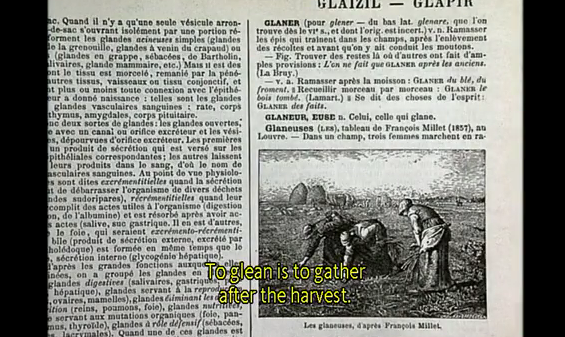
Scene from ‘The Gleaners and I’ – Introduction
The word Glean brings meaning according to Oxford dictionary (2010), 1) extract from various source, 2) collect gradually bit by bit or 3) gather. The action of gleaning once part of everyday life. I remembered my grandmother used to brings us to a bush to pick mushrooms, she know which mushroom to pick. At that time it was more due to the type of mushroom that she wanted is not sold in the market. It is one of the rare one, because people don’t know how to cook them. It was after the World War II, she discovered different ways of cooking and learn what type of fruit, mushroom, vegetable that she can pick around the bush (they grow wild) and cook. That is because it was hard to find food. People don’t have money to buy, but most important is not much things are easy to get in the market.. She always reminded us how hard her life has been, and that we should be grateful with what we have now. It was a hard life for her.. This stories from different scene after the World War II is parts of the whole gleaning activities we have with grandmother.. we were just a kid.. we did not to that for long.. we stop eating that mushroom, as the place we use to pick the mushroom have now been developed. And our gleaning activities stop there.
We seldom hear about gleaning in this modern world we live in. However, there are some countries that still we can find that the gleaning activities is still needed, mainly due to the need to life, to feed the hunger.. But in this documentary, the gleaning activities still can be found in a modern society, in France. The notion of gleaning have shifted, yes it still have to do with hunger but, some people still doing it because they against with the idea of wasting. Some of the products from the market are still eatable and in good condition, but still they get to be throw away because in two or three days (where the market will be closed) it will be bad. So they were thrown away.
This is a documentary made by Agnes Varda, based and inspired by a famous painting by realist painter Jean-François Millet’s “The Gleaners [Les Glaneuses] (1857)”. In her work she discuss about Why people glean? and What stimulate the process of gleaning?. It is an interesting and informative documentary to watch. I cannot post the embedded video here but I can include the link to the introduction of the documentary ‘The Gleaners and I’ by Agnes Varda (2000).
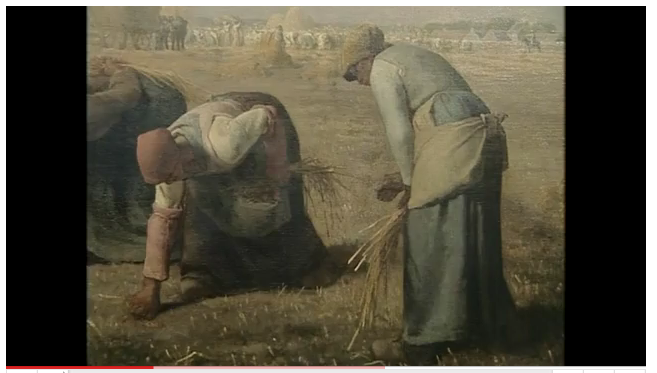
Jean-François Millet’s “The Gleaners [Les Glaneuses] 1857
This interesting article is from www.theconversation.edu.au written by Prof. Attila Brungs and Prof. Jim Mcnamara.
Foundation essay ” If we knew what it was we were doing,
it wouldnt be called research,
would it? While slightly flippant, this comment by Albert Einstein captures the unpredictability of research beautifully. There are many examples of this.
A mathematical approach which was first applied to using radio-telescopes to search for exploding black holes turned out to be fundamental to solving the wireless networking multipath problem.
That, in turn, led to CSIROs patented technology that underpins many of todays high speed wireless local area networks and inspired countless additional innovations and improvements to our way of life.
Breakthroughs in linguistics from UTS and other institutions allowed improved communication between hospital medical practitioners culminating in significantly improved patient outcomes.
Professor Hung Nguyen, Dean of Engineering and Information Technology at UTS, initially designed robots to play chess. After recognising the links between the artificial intelligence of robotics and neuroscience, he went on to focus one area of his research to utilise robotics for people with severe disabilities. That resulted in the development of the thought controlled wheelchair.
Significant breakthroughs such as these take a long time to develop, and there is a media friendly outcome at the end, making them an easy story to tell.
But for the full benefit of research to be achieved, it is critical that the outcomes of current research and the latest thinking are made accessible to the general public. And that means publishing not only traditional journal papers, conference presentations and books, but beyond.
The more obvious facets of research “ the latest in health and medical breakthroughs or must have gadgets, already shape the way we live.
However we sometimes forget the significance of research outcomes that enable our everyday decision making. They provide robust input to our opinions, or help foster an engaged community and shape public consciousness.
Research has the ability to provoke debate around some of the major global issues we are facing “ and in turn support fact-based government policy.
The case for communicating research is clear.
At one level it can help us make day to day decisions. Research conducted by UTSs Faculty of Nursing, Midwifery and Health revealed that if people suffering chest pains delay going to a hospital by just 15 minutes it significantly increases the chance of death.
And a novel IT approach is trialling the real time tracking of Sydney buses beamed directly to our smart phones.
Timely and public communication of research also provides the robust information and necessary evidence base which shapes critical policy decisions, industry investment choices or influences community groups.
Research outlining societys views towards tolerance and diversity provided the backbone for a recent session held in parliament on cosmopolitan and civil society.
Perhaps the most powerful aspect of research is its potential to act as a catalyst to stimulate and support public debate.
Climate change is undoubtedly one of the most challenging issues facing society today. The broad, accessible dissemination of the underpinning scientific evidence and potential solutions is fundamental to determining our response as a country.
Similarly, the latest research from the Global Phosphorus Network raises new issues such as the critical nature of the declining phosphorus stocks, and the implications for world food supply. Its an issue which has not yet seriously appeared on any governments radar, but it should.
The nature of research and how it can be utilised is changing. Multidisciplinary and ˜left field approaches are unquestionably the future trend for research. This is complemented by the breadth and diversity of new and digital media.
Research findings are now much more accessible to specialists in other fields. Industry and community members, too, can add to or use the original research in ways undreamt of by the researchers.
Take malaria. It threatens half the worlds population “ over 230 million cases are reported each year. A much wider audience was exposed to a potentially critical breakthrough when the Walter and Eliza Hall institute and UTSs i3 Institute published the first pictures of the malaria parasite in more accessible media channels, as well as academic literature. This could lead to innovative solutions to malaria being put forward from sectors of society completely unrelated to mainstream malaria research.
With these significant potential benefits, many universities and academics are putting significant time and effort in to broader engagement and attempts to engage the public consciousness.
There is a recognition by a number of us in the sector that were on a journey. Our efforts to support energetic media offices, proactive academics, and the adoption of new media channels is just the start. We are also increasing direct engagement with government and growing industry promoting programs such as public seminar series.
What are the challenges to more accessible research communication? Ironically it is often the pressure we put on our own academics. To be successful as academics we need to write for a critical academic community and contain theoretical constructs and abstraction which can, at times, present an impenetrable barrier to the non academic. Not just in terms of language, but also relevance.
The late Glenda Adams, an author and former UTS writing teacher, describes this beautifully in an essay in The Australian Author published shortly after her death in 2007. I sometimes feel that universities have placed a large pot of abstract nouns at their gates and to enter we must dip into the pot and take three abstract nouns and make something of them, she wrote.
Allowing academics the time to reframe their research to focus on the issues and outcomes which are relevant to a non-academic audience will allow greater accessibility.
The sheer amount of information generated during even one research project, which can run to many publications, conference papers and more, is also an intimidating barrier to even the most inquisitive citizen.
It is clear, quite rightly, that we are entering a period with increased emphasis on the demonstration of value for money of publically funded research.
The results of the first round of Excellence for Research Australia have recently been published. While very thorough, this exercise focused necessarily on elements including publications and citations which are essentially meaningless to the general public and was unable to include broader metrics on the impact of research on society.
Essentially, we have a dichotomy set up which needs to be carefully managed. We need to balance the drive towards a focused definition of quality which will direct funding, against the need to ensure that our publically funded research has the broadest possible impact in society.
The mainstream media have an important role in communicating research outcomes, and providing informed rather than sensational commentary on the issues that affect society. I believe that this is still not happening enough. There is sometimes an assumption (an incorrect one) that the general public does not want, or cannot cope with a complex, knowledgeable debate.
I believe that universities and researchers have a vital role to play in stimulating relevant, evidenced based discussion as part of their research activities.
Research is always outward looking, driven by a desire to change and improve the world around us.
‘The Gleaners and I’- Agnes Varda

Scene from ‘The Gleaners and I’ – Introduction
The word Glean brings meaning according to Oxford dictionary (2010), 1) extract from various source, 2) collect gradually bit by bit or 3) gather. The action of gleaning once part of everyday life. I remembered my grandmother used to brings us to a bush to pick mushrooms, she know which mushroom to pick. At that time it was more due to the type of mushroom that she wanted is not sold in the market. It is one of the rare one, because people don’t know how to cook them. It was after the World War II, she discovered different ways of cooking and learn what type of fruit, mushroom, vegetable that she can pick around the bush (they grow wild) and cook. That is because it was hard to find food. People don’t have money to buy, but most important is not much things are easy to get in the market.. She always reminded us how hard her life has been, and that we should be grateful with what we have now. It was a hard life for her.. This stories from different scene after the World War II is parts of the whole gleaning activities we have with grandmother.. we were just a kid.. we did not to that for long.. we stop eating that mushroom, as the place we use to pick the mushroom have now been developed. And our gleaning activities stop there.
‘Kulat sisiat’ is the name of the mushroom. Photo of Zakaria Mat Isa.
We seldom hear about gleaning in this modern world we live in. However, there are some countries that still we can find that the gleaning activities is still needed, mainly due to the need to life, to feed the hunger.. But in this documentary, the gleaning activities still can be found in a modern society, in France. The notion of gleaning have shifted, yes it still have to do with hunger but, some people still doing it because they against with the idea of wasting. Some of the products from the market are still eatable and in good condition, but still they get to be throw away because in two or three days (where the market will be closed) it will be bad. So they were thrown away.
This is a documentary made by Agnes Varda, based and inspired by a famous painting by realist painter Jean-François Millet’s “The Gleaners [Les Glaneuses] (1857)”. In her work she discuss about Why people glean? and What stimulate the process of gleaning?. It is an interesting and informative documentary to watch. I cannot post the embedded video here but I can include the link to the introduction of the documentary ‘The Gleaners and I’ by Agnes Varda (2000).

Jean-François Millet’s “The Gleaners [Les Glaneuses] 1857
How do we get people to talk? Here’s several possible ways!
Interviewing: I have not been so well informed about it, until I watched this video!
This is a video done by Gabriel Biller and Kristy Scovel (2008) exploring the question about denim jeans “Who’s buying premium denim and why?”.
It’s a simple questions to explore, and there so many ways to explore it. Interview is a classic one. First thing a student will answer if you asked them how would they conduct this research, they will said interview. Most of them (based on my personal experience teaching methods in research) have not much clue of how to conduct an interview and not even close to have list of what kind of questions they want to ask. Interview is one of the most stimulating process for me. Not only the interviewee needs to accomplish the skills in understanding and reading human behaviors and reactions but also how to engaged with the person who is sitting in front of you.
Things like making them feel comfortable with the ambiance surrounding them, with you as the interviewee, the equipments of recording and most of all the topic and research questions you interested to know from this person. Everybody knows what is an interview, and most of the time it leads to an stereotypical idea that the person who is interviewing wants to get as much as information from you, which makes the interviewee feel uncomfortable.
But this video brings another view about how fun can interview be, provides skills to learn as a interviewer and also what should an interviewer try not to do. Thumb’s up to Dori Tunstall’s taking step by step in details through the emotional elements in the process of interviewing, Collin Murray in sharing the experience about interviewing and Jeremy Alexis in discussing Don’t and Do in the process of interview using his interviewing process as the critic’s subject. If you need to know about interview watched Gabriel Biller and Kristy Scovel video.
“Now it’s gonna take a while before you get there, […] but the moment will happen” – Dori Tunstall.
Thumbs up for this excellent video!
Getting People to Talk: An Ethnography & Interviewing Primer from Gabe & Kristy on Vimeo.
INFO about the video:
The IIT Institute of Design is a graduate school of design dedicated to advancing the methods and practice of human-centered innovation. We believe that real innovation starts with users’ needs and employs a set of reliable methods, theories, and tools to create solutions to their problems. Ethnography and interviewing are how we, as designers, see the world through other people’s eyes and get them to tell us their stories. In the spring of 2008, we talked to professors, experts, and students about this philosophical orientation and how to actually get people to talk. To ground things a bit, we took a look at a truly universal article of clothing “ denim jeans “ and set out to understand: “Who’s buying premium denim and why?”
[ Citation: Gabriel Biller & Kristy Scovel, 2008 ‘Getting People to Talk: An Ethnography & Interviewing Primer’ viewed 31 March 2011, http://www.vimeo.com/1269848 ]
Design thinking: How’s things work, the story of STUFF
This is an interesting video that I seriously think any designer should spend time watching it. It reflected on our daily behavior and will be able to inform us about what is outside of our comfort zone in terms of design practices. It’s worth seeing. The presentation is nicely presented with icons and simple visual to communicates the scenarios. I think it should be one of the main discussion in design education. I did this in my tutorial class. My first year design student, thinks that there’s nothing they can do, as the task is too big, and that they are only a beginners. Well, most of them think that as a designer, they are helpless as the client rules the process. Is this true? Really, we designer didn’t have much say in our own design process? What do you think? I had the discussion with my student, and good to see that this kind of assumption has been bravely put on the discussion table from my student. Clearly they wanted to contribute but didn’t see ways of doing it. So design educators, it’s our job.

